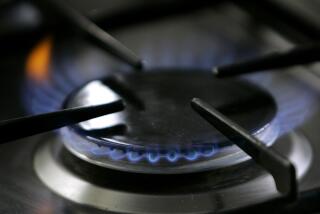A Real Hot Item for Home Owners
- Share via
American consumers are not only buying fireplace units at a record pace (900,000 in 1997 at an estimated cost of $166 million, says the industry), they also are using them more.
According to Housing Economics magazine, roughly 73% of single-family home owners in units built after 1989 used their fireplaces, compared with 56% living in houses built earlier. The Hearth Products Assn. attributes this to the many varieties of fireplace systems today, including these major categories:
* Wood-fueled fireplaces: Fireplace inserts (a wood-burning metal box with a glass front that goes into the fireplace) burn cordwood, utilizing technology that controls combustion, reducing particulate emissions by 85%, providing more warmth with less wood.
* Factory-built fireplace: A firebox enclosed within an insulated metal cabinet framed into the wall. (Common in new homes.) Offers the option of burning wood, manufactured logs or the gas log set of your choice.
* Pellet-fueled hearth appliances: Fireplace inserts that burn dried, compressed wood byproducts. Can be operated off a thermostat.
* Vented-gas hearth appliances: A gas fire mimics a wood-fueled blaze. Gas logs or fireplace inserts fit in existing fireplaces or start from scratch with a free-standing fireplace. Choose from conventional vertical venting or direct-vent, through a wall, which requires no chimney.
* Vent-free gas hearth appliances: These burn fuel so completely there is no need for venting, which means they can be placed virtually anywhere. They burn natural gas. (Not yet available in California. A new building code standard for these products is expected to be complete in the summer of 2000.)
For more information, the association’s Web site is https://www.hearthassociation.org.
More to Read
Inside the business of entertainment
The Wide Shot brings you news, analysis and insights on everything from streaming wars to production — and what it all means for the future.
You may occasionally receive promotional content from the Los Angeles Times.









